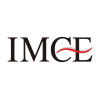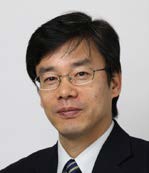
IMCE
Institute for Materials Chemistry and Engineering, Kyushu University
九州大学
先導物質化学研究所

LAST UPDATE 2017/02/25
-
研究者氏名
Researcher Name菊池裕嗣 Hirotsugu KIKUCHI
教授 Professor -
所属
Affiliation九州大学 先導物質化学研究所
融合材料部門・ナノ組織化分野
Institute for Materials Chemistry and Engineering, Kyushu University
Division of Integrated Materials -
研究キーワード
Research Keywordsソフトマター
液晶
ブルー相
電気光学効果
Soft matter
Liquid Crystal
Blue phase
Electro-optics
- 研究テーマ
Research Subject -
新規液晶ソフトマターの開発
Development of novel liquid crystalline soft matter
研究の背景 Background of the Research
分子自己組織学は化学、物理や生物などの幅広い学問に及ぶ学際領域です。分子自己組織によってナノ秩序や階層構造を自発的に物質内に作ることが出来、そのような物質はボトムアップ型の電気・光学デバイス材料として有用です。
Molecular self-assembly, which is an interdisciplinary subject extending over chemistry, physics and biology, derives the spontaneous nano-ordering being able to contribute much to key technologies of the bottom-up type electric and photonic devices.
研究の目標 Research Objective
高分子や液晶の分子自己組織体にトポロジカルフラストレーションを化学的・物理的に導入し特異なフォトニック構造や機能を有する新規ソフトマターを創出します。特に、高速応答の電気光学効果やチューナブルなフォトニック構造を有する液晶性ソフトマターを開発します。
The focus of our studies is creating novel soft-matter with unique photonic structures and functionality through chemical and physical programming of topological frustration for the molecular assembling geometry of liquid crystals and polymers. We develop novel functional materials showing fast electro-optics and photo-controllable photonic band.
研究図Figures

論文発表 / Publications
Adv. Funct. Mater., 23, 2387–2396(2013). Phys. Rev. E, 89, 012506 (2014). ChemPhysChem, 15, 1447-1451 (2014). Handbook of Liquid Crystals, 2nd Ed., Vol. 3, pp.611-619, Wiley-VCH (2014).
研究者連絡先 / HP
- kikuchi
 cm.kyushu-u.ac.jp
cm.kyushu-u.ac.jp - http://kikuchi-lab.cm.kyushu-u.ac.jp/eng/index.html